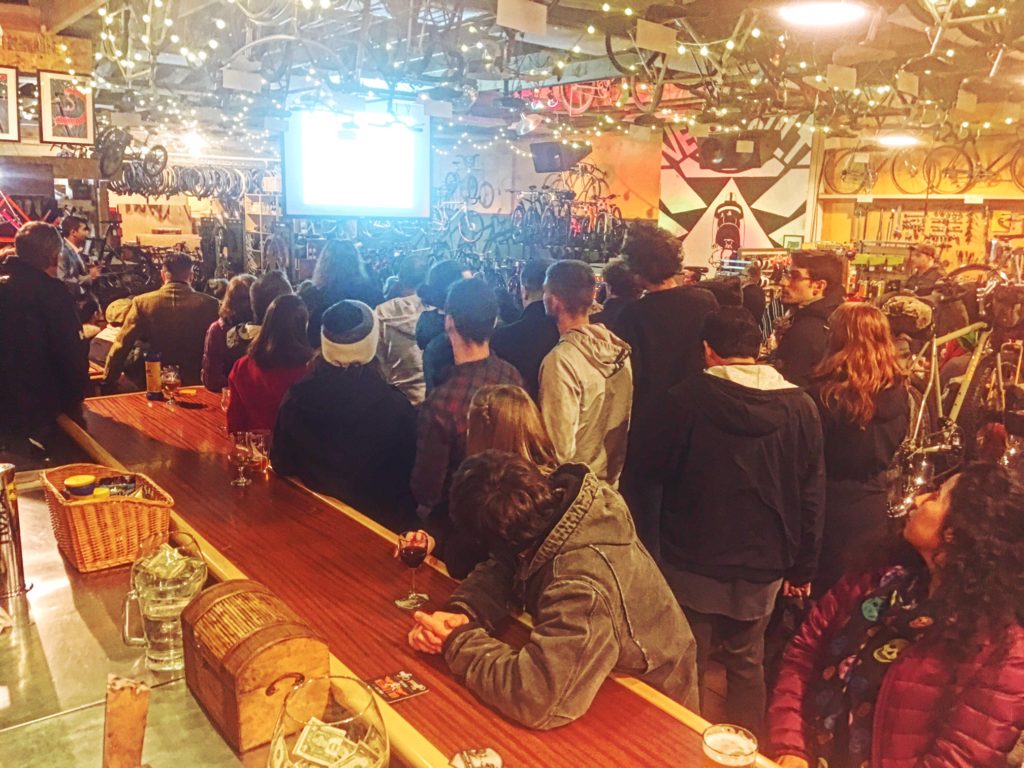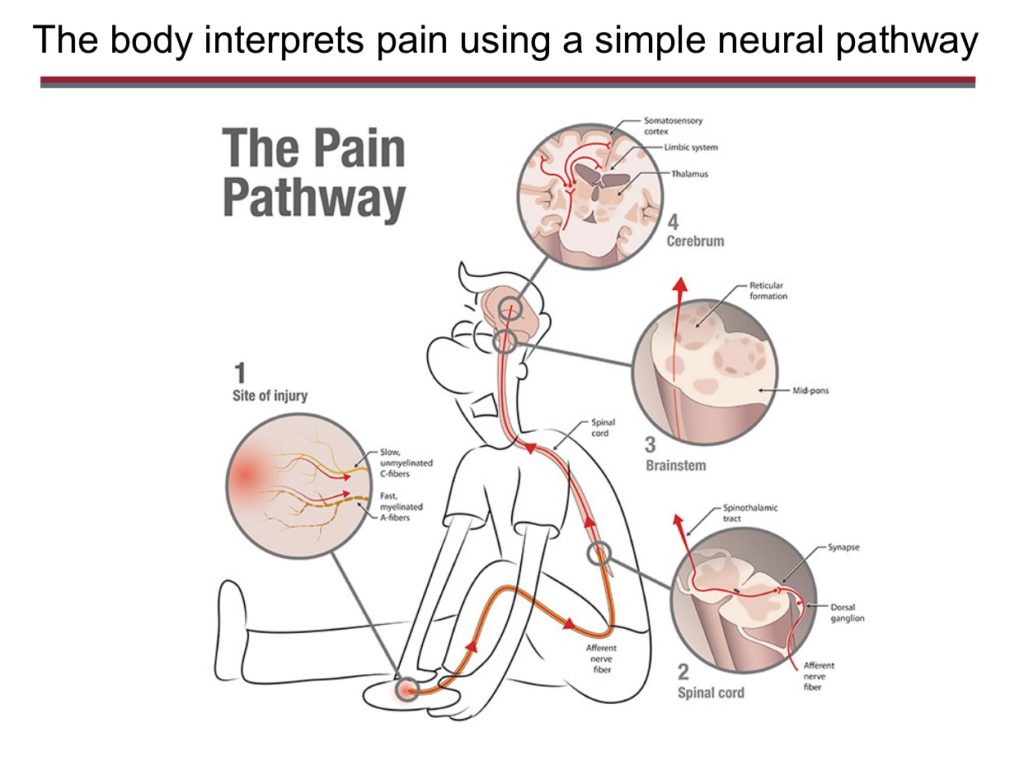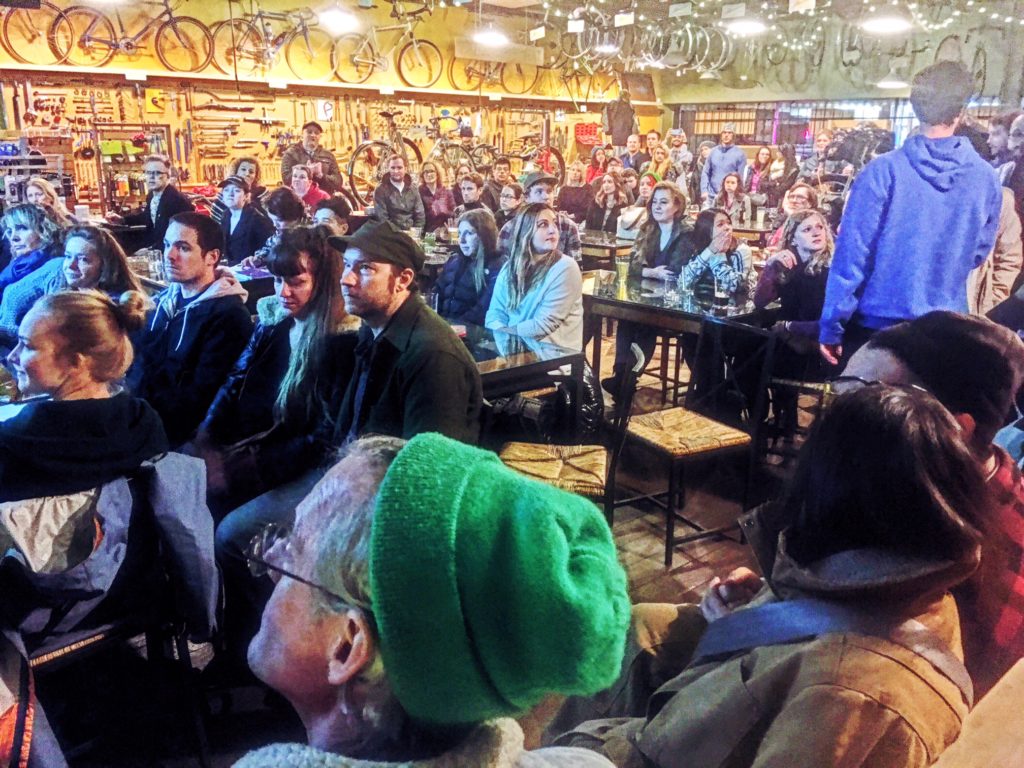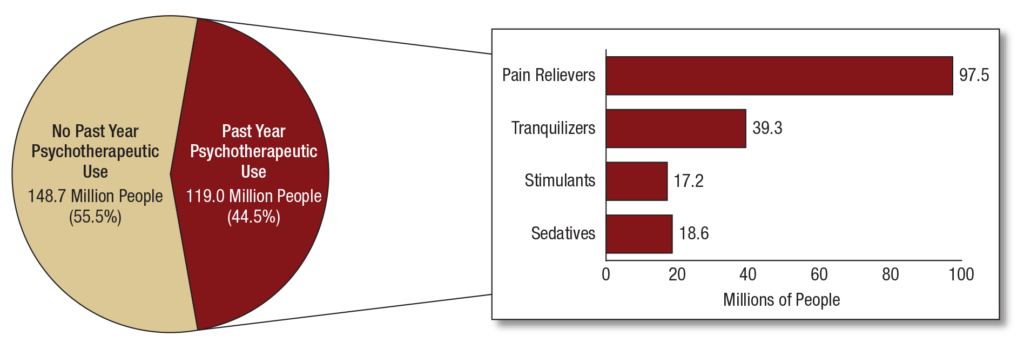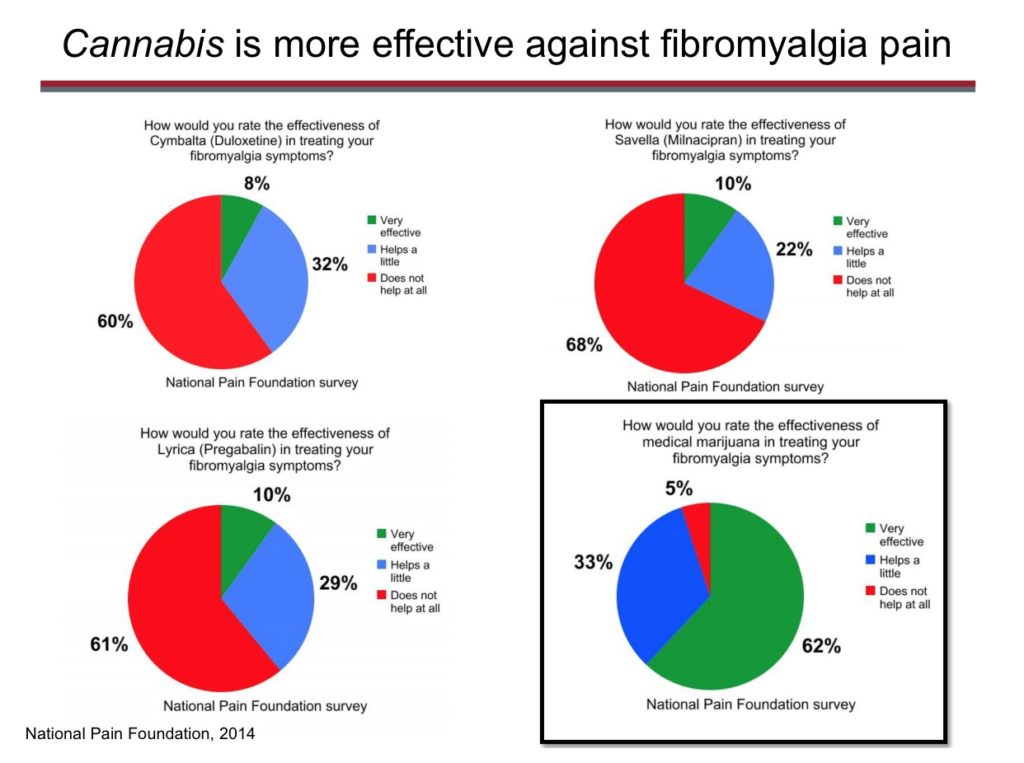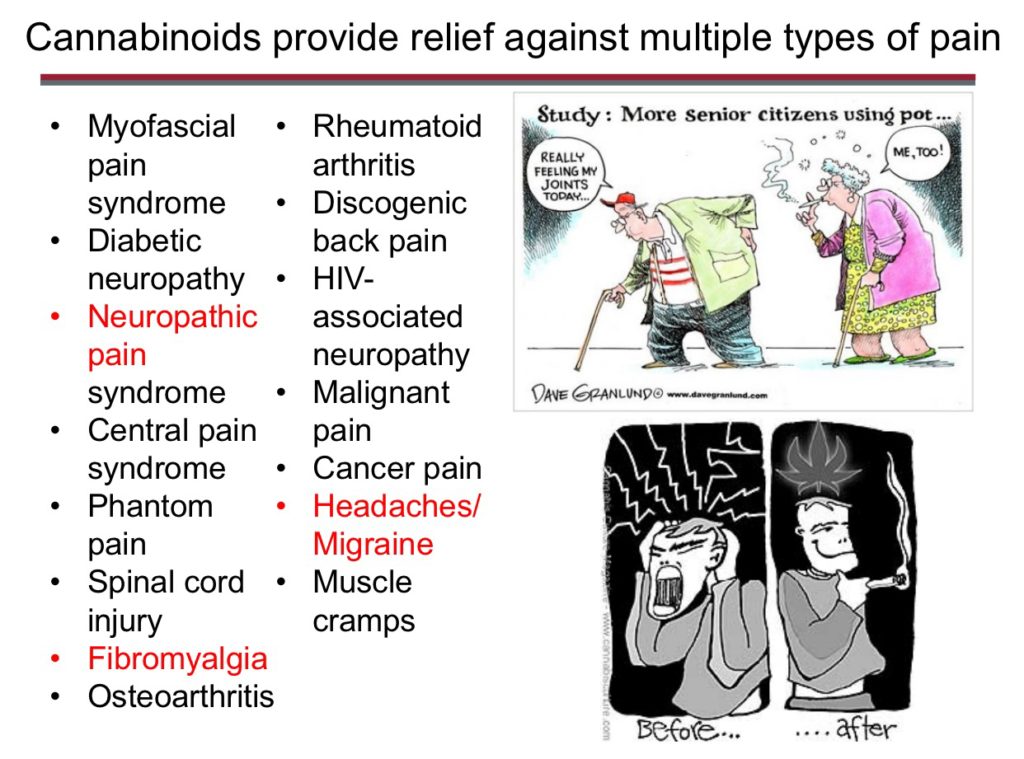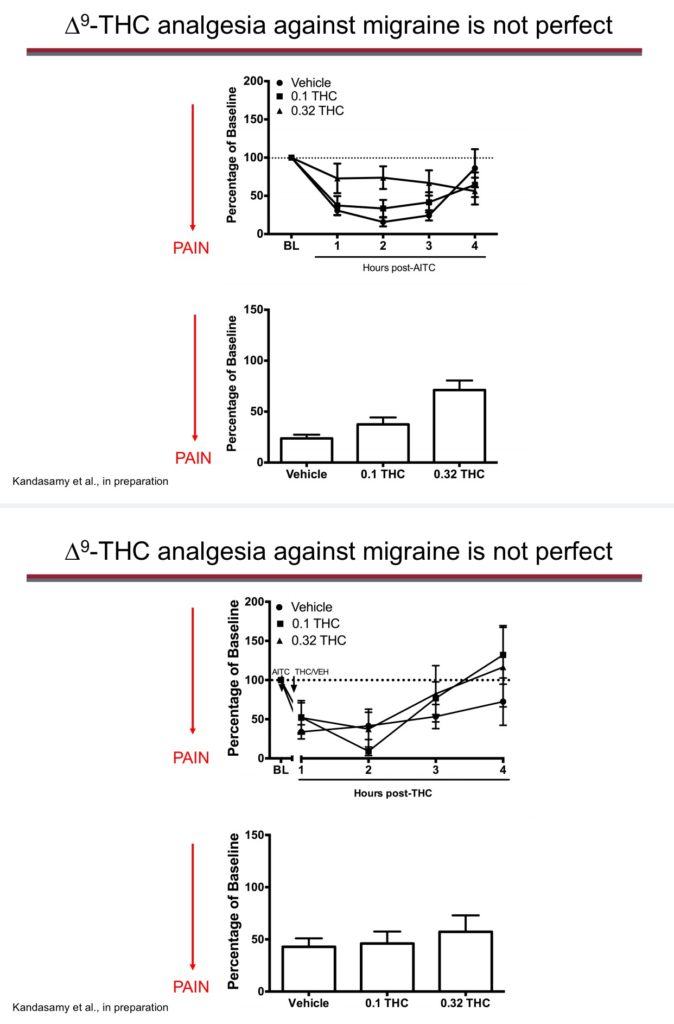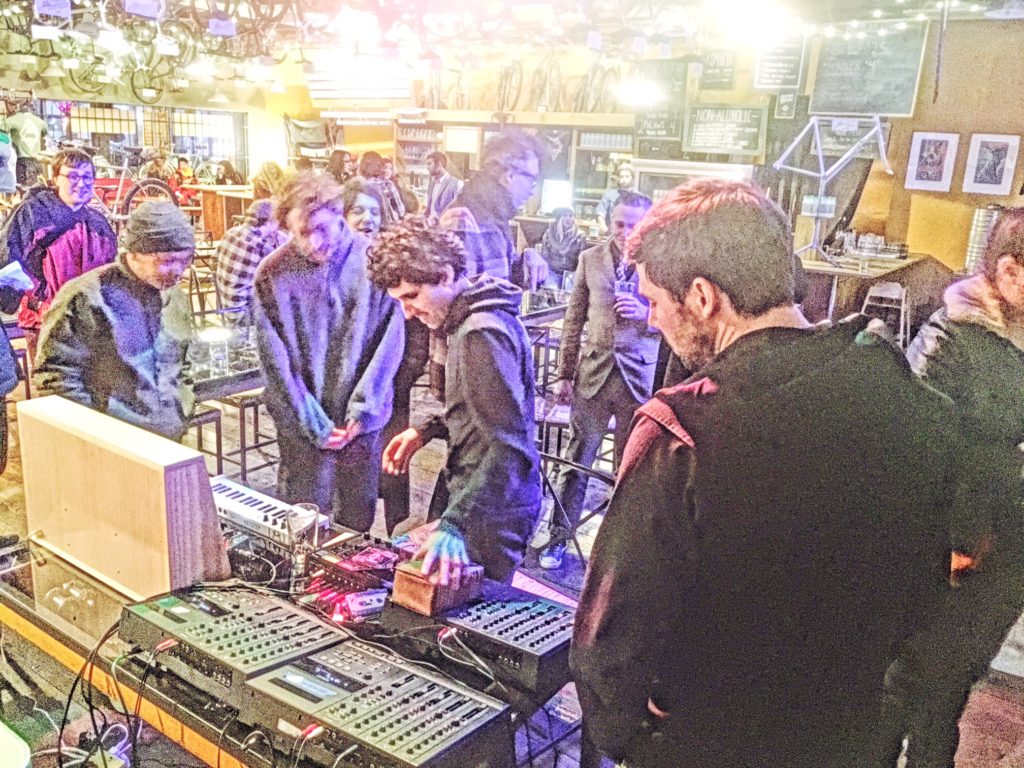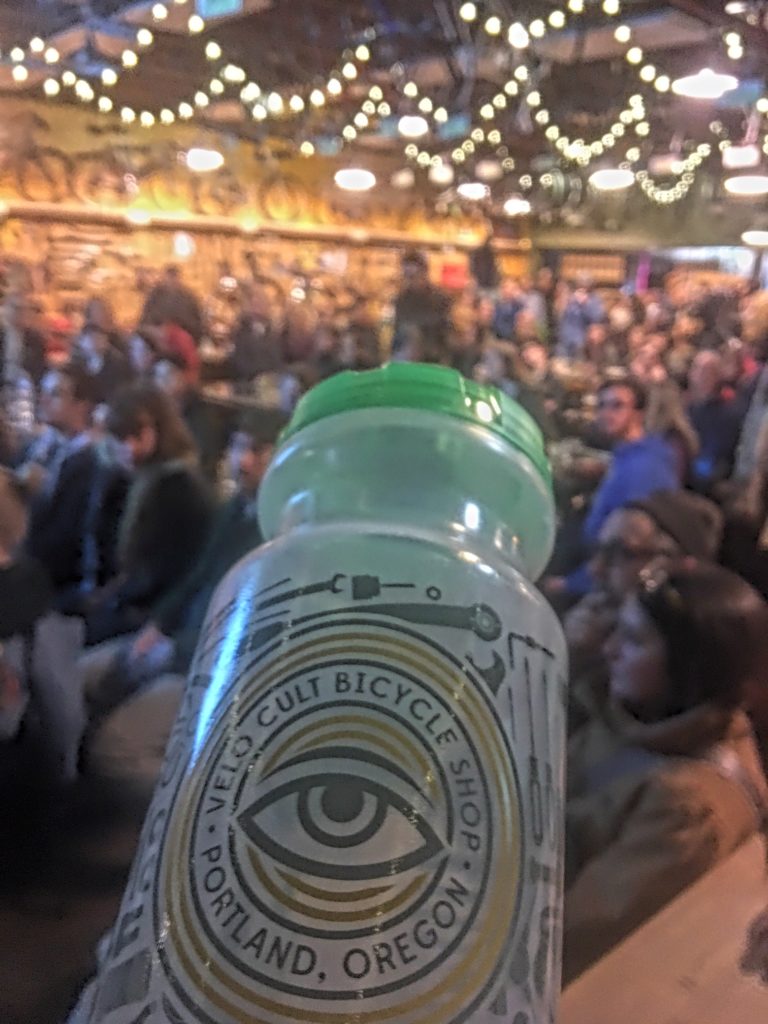A huge crowd of curious people streamed into Velo Cult eager to learn about local, federally funded research on how chemicals in marijuana might help in the treatment of chronic pain, and also hear from creative Portland musicians Bob Desaulniers and Tony Remple…
This is becoming a season of public cannabis research presentations – science communication at its finest 🙂 – including a recent Noggin workshop at the Academy of General Dentistry in Seattle, and our upcoming panel at the second annual Cannabis Collaborative Conference in Portland…
Ram Kandasamy from Mike Morgan’s Neuroscience lab at WSU Vancouver took the stage to quote a formal definition of pain as “an unpleasant sensory and emotional experience associated with actual or potential tissue damage, or described in terms of such damage” (from the International Association for the Study of Pain).
EXPLORE MORE: Ram Kandasamy SLIDES Noggin @ VeloCult
The perceptual experience of pain is both normal and protective – for example, after surgery, or acute injury, and it generally dissipates along with recovery and healing. However, abnormal pain is chronic and unremitting, and sometimes unrelated to remaining physical damage. The therapeutic goal is to eliminate the abnormal pain, but without interfering with the normal, protective pain response…
LEARN MORE: Pain management in recovery
Chronic pain is a huge concern, and widely prevalent across the world...
LEARN MORE: The Cost and Burden of Chronic Pain
LEARN MORE: Chronic Pain: Symptoms, Diagnosis, & Treatment (NIH)
And the body, says Ram, interprets or perceives tissue damage as pain via a relatively simple neural pathway…
Tissue damage actually bursts open your cells, spilling proteins that belong inside into the extracellular space. Special tissue damage sensing neurons, called nociceptors, have unique proteins (receptors) embedded in their membranes that bind these released cellular constituents and respond with electric currents, carrying news of the injury into the spinal cord. There they make chemical connections, called synapses, with other neurons.
Some neurons relay the message to spinal cord motor neurons, which can generate a reflexive withdrawal response of the injured limb. However others transmit this information to higher brain areas, including those that map the damage, and which support your perceptual experience of pain…
However, millions of Americans suffer from chronic pain, with 82% reporting that their symptoms are “poorly treated,” and 50% complaining that they lack “control.” In addition, noted Ram, women suffer more than males from chronic pain disorders – in some cases over three times more!
LEARN MORE: Sex differences in pain and pain inhibition
Current treatment of both acute and chronic pain involves drugs called opioids, including morphine, codeine, hydrocodone (e.g., Vicodin), hydromorphone (e.g., Dilaudid) and meperidine (Demerol). Yet while opioids, which block the transmission of incoming tissue damage information in the spinal cord and brainstem, offer relief from acute pain, their use in managing chronic pain has been disastrous.
Even acute opioid administration has substantial drawbacks, as indicated by Ram…
However, last year, according to the NIH, 28,000 Americans DIED from opioid overdose.
LEARN MORE: Rates of prescription opioid use and opioid use disorder double in 10 years
And new statistics released in September 2016 by the Substance Abuse and Mental Health Services Adminstration (SAMHSA, part of U.S. Health & Human Services), from analysis of the annual National Survey on Drug Use and Health (NSDUH), revealed the shocking extent of psychotherapeutic drug use in the United States…
From the report: “In 2015, an estimated 119.0 million Americans aged 12 or older used prescription psychotherapeutic drugs (pain relievers, tranquilizers, sedatives and stimulants) in the past year, representing 44.5 percent of the population.“
Ram noted that medical marijuana laws, like those passed in Oregon and Washington, have dramatically reduced the prescription rate for opioids, most notably for treatment of chronic pain…
And several cannabinoids – the psychoactive chemicals found in marijuana, of which there are more than 100 – are now available for research and potential therapeutic use, including Marinol (delta 9-THC, Schedule III), Sativex (delta 9-THC and cannabidiol, or CBD, Schedule IV) and of course, in some states, medical marijuana (still remarkably Schedule I).
LEARN MORE: Drug Scheduling (DEA)
In summary, opioids are often dangerous and ineffective medications for the treatment of chronic pain, millions are becoming dependent and thousands now die from fatal overdoses each year…
In contrast, cannabinoids have no LD-50 (i.e., there is no lethal dose), and appear significantly more effective at reducing pain, at least for some conditions. For example, Ram reported National Pain Foundation survey data for patients suffering from fibromyalgia, a common and chronic disorder characterized by widespread pain, among other symptoms…
LEARN MORE: National Institute of Arthritis and Musculoskeletal and Skin Diseases
Ram also noted how cannabinoids have shown great promise in treating pain associated with a host of additional conditions, including migraine and neuropathic pain (i.e., pain due to nerve damage)…
Our Velo audience was fascinated by Ram’s own research on migraines and THC…
They had many questions about the variability of cannabinoid content in different samples of marijuana, federal restrictions on sources of marijuana used in research, and the need for more investment in drugs offering better and safer relief from pain than opioids.
Tony Remple and Bob Desaulniers then took the floor to perform some eclectic, atmospheric, perceptually novel compositions that drew attention and even, in some cases, seemed to generate synesthetic experiences in a few listeners (sounds provoking textural sensations, for example!).
HEAR MORE: Tony Remple on Soundcloud
HEAR MORE: Bob DeSaulniers on Soundcloud
Another exciting educational evening of exemplary arts-infused science communication, thanks to the extraordinary Velo Cult, and the volunteer efforts of Ram Kandasamy, Tony Remple and Bob Desaulniers.
Special thanks are due James Reling, an enthusiastic Noggin outreach contributor and Kill Rock Stars Production Manager. Congrats on KRS’s 25 years of great indie music work in Portland!








